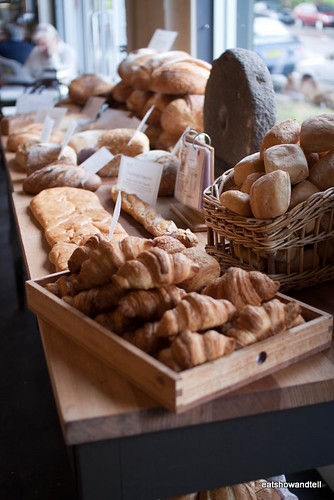Yeah, right.
That is to say, it is easy once you have the right ingredients. Initially finding them, however...
Let's start from the top. Ladies and Gentlemen, I present to you:
The Bread

You would think bread would be a pretty safe thing to eat. In general you would be right, and both white and brown loaves are edible.
Exceptions are: anything with lemon or tomato (obvious, but it is good to state the obvious sometimes, especially where allergies are concerned!), sourdough or rye (citric acid is produced or used in the making process somewhere) and some of the very, very cheapest supermarket loaves, which contain citric acid in the ingredients list.
The Spread
As I think I have said elsewhere, many margarine varieties contain citric acid. If you have the choice, stick with butter, as these are usually safe.
If in doubt, just leave it out! I generally eat my sandwiches without the spread anyway.

The Filling
This is a HUGE topic, so I'm going to gloss.
If you are putting your fillings together yourself from scratch then just use your common and you'll be away. If, however, you want to buy sandwich fillers from the supermarket or elsewhere you're in for a tougher time. Don't assume that anything is edible until you have thoroughly checked the label. A lot of things add lemon juice (which you cant taste, and most people wouldn't even notice. I know I never used to.). There are SOME ones you can eat, but as I said; check, check, check!
Oh, and beware ye the mayonnaise - citric acid is often a preservative. If you are a mayonnaise fan I know Heinz mayo is safe enough.

what bread doesn't have citric acid and or vinegar?
ReplyDelete